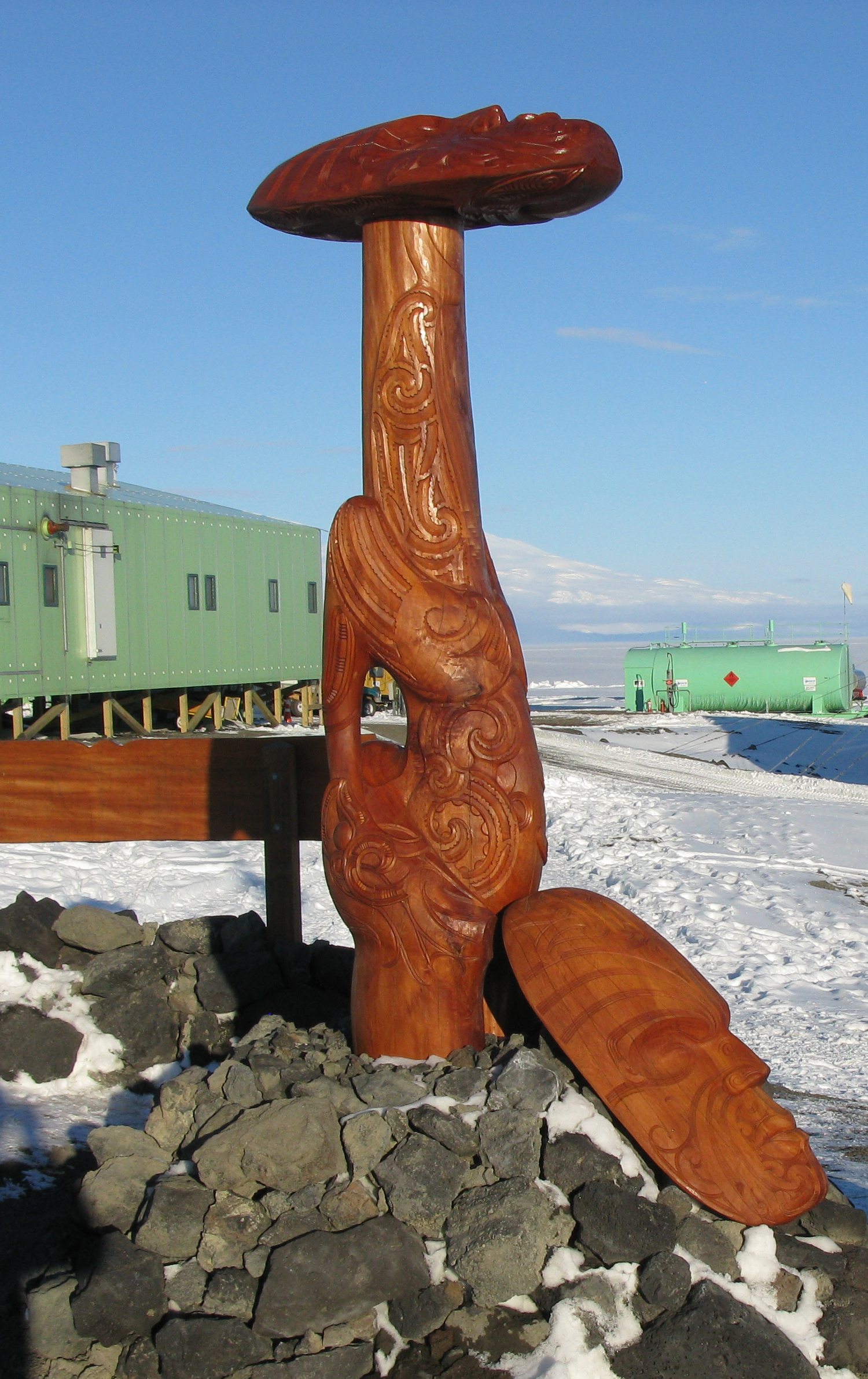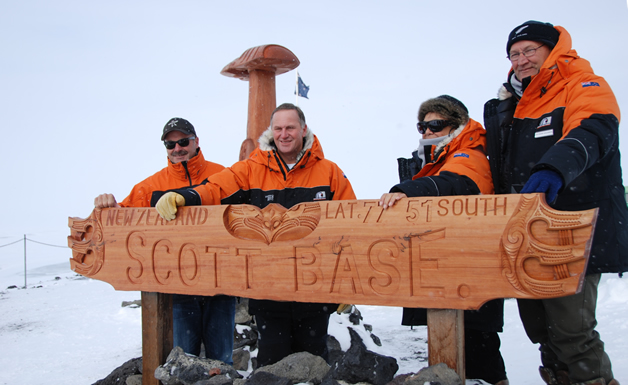Pouwhenua, Te Kaiwhakatere o Te Raki, a carved Scott Base sign and tukutuku panels created by Ngāi Tahu artists were unveiled at Scott Base on Sunday 20 January.
Prime Minister John Key, Ngāi Tahu Kaiwhakahaere Tā Mark Solomon, and master weaver Ranui Ngarimu took part in the special ceremony.
During the ceremony a snow chilled blizzard blustered over Scott Base. Then as Mark finished the last karakia the sun burst through the clouds bringing a calm to Scott Base.
“He tohu tēnā – that was a sign for me that what we were doing down there was right,” said Ranui.
Antarctica New Zealand invited Ngāi Tahu to make a carved pouwhenua (marker post) and tukutuku panels (traditional decorative wall panels) for Scott Base on behalf of all Māori.
Ngāi Tahu Kaiwhakahaere Tā Mark Solomon said it was an honour to be tasked with creating a cultural marker at Antarctica, on behalf of all Māori.
“Māori have a long history of exploration akin to those who come to Antarctica. It was our privilege to create a pouwhenua that depicts this characteristic we share, with Māori and with those who journey to Antarctica.”
Master carver Fayne Robinson (Poutini, Ngāi Tahu) designed and carved the 2m tall pouwhenua. The pouwhenua personifies exploration, adventure and discovery, which are defining characteristics of all people, past and present, who journey to Antarctica. The head of the Te Kaiwhakatere o Te Raki looks straight up to the sky as a symbol of celestial navigation. It is decorated with stars, waves, water and animals depicting nature and representing the importance of the environment.
Under the direction of Fayne Robinson, trainee carvers Caleb Robinson (Poutini, Ngāi Tahu), Mahana Coulston (Poutini, Ngāi Tahu), Jamie Whittle (Ngāi Tūāhuriri), worked together on two carved panels to be installed in the recreation room at Scott Base.
They also carved a Scott Base sign, to be placed at the entrance of the base.
To accompany the pouwhenua and the sign, two tukutuku panels have been designed by Ngāi Tahu master weaver Ranui Ngarimu (Ngāi Tahu, Ōraka-Aparima). The panels are to be mounted upon the Leaders Wall and the Memorial Wall inside Scott Base.
Each tukutuku panel features traditional designs to tell their stories. The memorial panel, He Maumahara, shows many crosses or stars shinning in the night sky, acknowledging those who have been to Antarctica and passed on.
The second panel, He Manukura, speaks of leadership, or those who have inspired others. It acknowledges and tells the story of the on-going journey of learning and portrays the story of people who continue to research in Antarctica. Ngāti Waewae weavers Nan Pu, Papakura Tainui, Rititia Read, Danealla Mason, Tangi Weepu, Joe Mason, Jason Tuhuru, Bunty Mason from the West Coast and Antarctica New Zealand staff assisted Ranui Ngarimu in creating the tukutuku panels.
Ranui said it was a pleasure and an honour to be able to go to Antarctica and gives their thanks to those who made it happen.
“I would like to acknowledge the people from Antarctica New Zealand for having the foresight to get Ngāi Tahu involved; Fayne and his carvers; the weavers from the coast and the staff from Antarctica New Zealand who helped with the tukutuku panels.”


